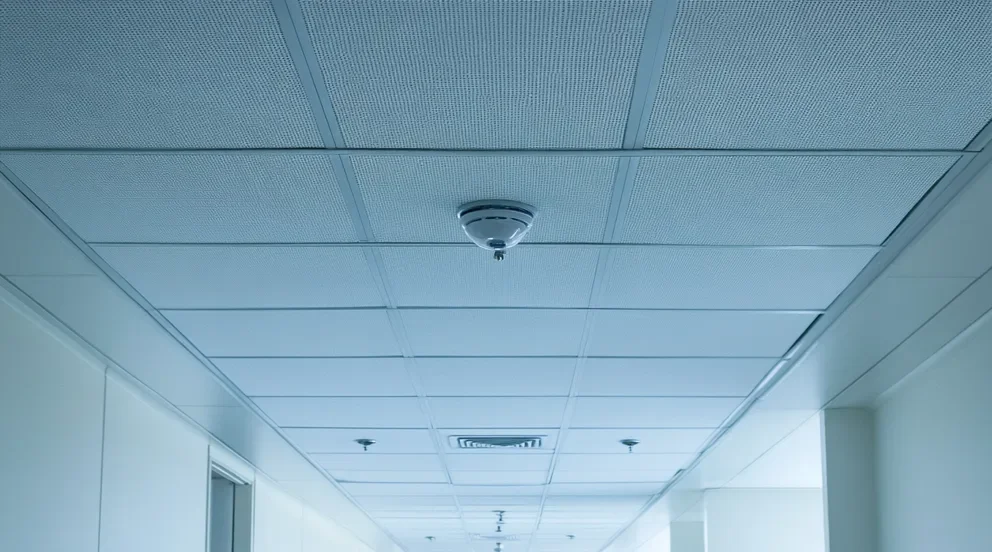Ground maintenance is a critical part of a comprehensive Computerized Maintenance Management System (CMMS). It refers to the process of managing, maintaining, and enhancing the appearance and usability of a physical area. This can include a variety of tasks, from simple cleaning and litter removal, to more complex tasks such as landscaping, mowing, planting, and soil management. The ultimate goal is to ensure the area is safe, usable, and visually appealing.
In the context of a CMMS, ground maintenance becomes a more streamlined and efficient process. The system can schedule regular maintenance tasks, assign these tasks to specific team members, and keep track of all work done. It helps ensure that no tasks are overlooked, and that each is completed in a timely manner.
A CMMS also provides a central location for all maintenance records. This allows for easy tracking of what work has been done, when, and by whom. This can be particularly useful for regulatory compliance, as well as for cost control and budgeting purposes.
Additionally, a CMMS can assist in the management of resources. This includes both the physical resources, such as tools and equipment, and human resources, such as scheduling and job assignments.
In sum, ground maintenance in the context of a CMMS is about more than just keeping an area clean and attractive. It’s about improving efficiency, reducing costs, and ensuring that the area is a safe, pleasant, and functional space for everyone who uses it.
What tasks are included in regular grounds maintenance in our CMMS?
Regular grounds maintenance in our Computerized Maintenance Management System (CMMS) involves several tasks aimed at keeping the facility’s outdoor space clean, safe, and attractive.
First, there’s lawn care, a crucial task which includes mowing, watering, aerating, and fertilizing the grass. This ensures a lush, green, healthy lawn.
Next, we have landscaping tasks. These involve planting new trees, shrubs, and flowers, pruning branches, and removing dead or diseased plants. The landscaping team also maintains the aesthetic of outdoor areas by arranging plants in an eye-catching manner.
Thirdly, our CMMS includes tasks for maintaining outdoor structures like benches, fountains, and play equipment. This can involve painting, repairing, and cleaning these elements, to keep them safe and appealing.
Pathway and driveway maintenance is another crucial task. It includes repairing cracks, clearing debris, and removing snow or ice during winter months to ensure safe and accessible walkways.
Lastly, the CMMS includes tasks for litter control and waste removal. This entails regular inspection for and removal of trash, ensuring a clean and enjoyable environment.
Each of these tasks is scheduled, tracked, and managed efficiently in the CMMS, ensuring that no detail is overlooked in the upkeep of the ground facilities. The system enables the groundskeeping team to operate efficiently, maintaining a pleasant outdoor environment for everyone to enjoy.
What kind of reporting features does CMMS offer for tracking grounds maintenance tasks?
A Comprehensive Maintenance Management System (CMMS) offers various reporting features that streamline tracking of grounds maintenance tasks. Users can generate detailed reports that provide insights into various aspects of maintenance operations.
One essential feature is task status tracking. This allows managers to monitor the progress of each task, knowing whether it is completed, in progress, or yet to be started. By providing real-time updates, it eliminates guesswork and enhances task management efficiency.
Another key feature is preventive maintenance scheduling. The system can automatically schedule routine tasks, helping to prevent equipment breakdowns and maintaining optimal operation of all assets.
The CMMS also provides a complete inventory tracking feature. It keeps track of every piece of equipment, its current condition, and when it was last serviced. This prevents equipment overuse and improves overall asset lifespan.
The system also offers extensive data analysis capabilities. It can analyze task completion rates, equipment breakdown frequency, and employee productivity. This data is invaluable for highlighting areas that need improvement and for planning future maintenance operations.
Finally, the CMMS has the ability to create custom reports tailored to specific needs. Whether a manager needs a report focused on a particular equipment type, a specific time period, or a certain task type, the system can generate it.
Can we track the cost of grounds maintenance tasks in our CMMS?
Certainly, tracking the cost of grounds maintenance tasks in a Computerized Maintenance Management System (CMMS) is not only possible but also advisable for efficient operations. In most cases, these systems have built-in features designed specifically to help monitor and control costs associated with different tasks.
The cost-tracking feature in a CMMS can be a game-changer for grounds maintenance operations. By inputting cost data related to labor, materials, and equipment used for each task, the system provides a clear picture of the financial resources invested in grounds maintenance.
Besides tracking the real-time costs, a CMMS also allows for forecasting future expenses. By analyzing past data, it can predict the cost of similar tasks in the future, aiding in budget planning and allocation. This feature helps organizations to stay within their budgetary constraints while ensuring optimal maintenance of their grounds.
Another advantage of cost-tracking in a CMMS is the ability to identify cost-efficient methods of grounds maintenance. It helps pinpoint tasks that are draining resources disproportionately. This knowledge enables organizations to implement cost-saving strategies by identifying cheaper alternatives or optimizing current practices.
Moreover, a CMMS provides detailed reports on the cost of grounds maintenance tasks. These reports can be invaluable for decision-making and strategizing. They offer insights into the cost-effectiveness of the methods employed and areas where improvements can be made.
Does CMMS allow for the documentation of grounds maintenance procedures and protocols?
Yes, a Computerized Maintenance Management System (CMMS) does allow for the documentation of grounds maintenance procedures and protocols. This system provides a digital platform where organizations can store, manage, and track their maintenance data. It helps to centralize all the maintenance activities, ensuring an organized and efficient workflow.
One significant feature of CMMS is its capability to document procedures and protocols. This feature is crucial in grounds maintenance where standard procedures must be followed to ensure the safety and upkeep of the facilities. It enables users to create, save, and update maintenance procedures for various tasks. This process includes detailed instructions, checklists, and necessary safety precautions.
Moreover, with CMMS, maintenance teams can easily maintain protocols. This system allows users to set repetitive tasks, schedule preventive maintenance, and assign tasks to team members. It helps ensure that all necessary maintenance activities are performed timely and according to the prescribed protocols.
Another benefit of using CMMS for grounds maintenance is its tracking and reporting feature. It helps in keeping track of all maintenance activities, work orders, spare parts, and other important data. This feature ensures transparency and helps in making informed decisions.
How can we utilize the CMMS to improve efficiency in our grounds maintenance procedures?
Utilizing a Computerized Maintenance Management System (CMMS) can significantly enhance efficiency in grounds maintenance procedures. Through systematic organization of tasks, CMMS helps eliminate the guesswork often associated with maintenance scheduling. It offers a clear schedule for routine maintenance, effectively reducing the likelihood of unexpected repairs and costly downtime.
Furthermore, CMMS provides a centralized database of all maintenance activities, assets, and equipment. This systematized record-keeping allows for improved tracking and analysis of maintenance trends. By understanding these trends, we can identify recurring issues, pinpoint their origins, and implement proactive measures to prevent future occurrences.
The implementation of CMMS also simplifies the process of task delegation. By offering a clear visual representation of tasks, it allows managers to assign roles efficiently, ensuring that no tasks are overlooked and that each team member knows their responsibilities. This increased visibility improves accountability, ensuring tasks are completed quickly and effectively.
An additional advantage of CMMS is its ability to manage inventory more efficiently. It monitors and tracks stock levels of critical spare parts and equipment, reducing the chances of running out of stock. This feature is instrumental in preventing delays in maintenance procedures, thereby enhancing productivity.
Through these methods, a CMMS system can significantly improve efficiency in grounds maintenance procedures. It acts as a comprehensive tool that streamlines processes, improves transparency, and enhances planning and organization. By adopting this system, we can look forward to a more efficient and effective grounds maintenance operation.
Is it possible to integrate our CMMS with other systems to streamline grounds maintenance tasks?
Indeed, integrating a Computerized Maintenance Management System (CMMS) with other systems can streamline grounds maintenance tasks. Third-party integrations can synchronize data across different platforms, reducing manual entry and improving accuracy.
If the CMMS is integrated with an Enterprise Resource Planning (ERP) system, for example, maintenance requests can be directly submitted to the CMMS. This feature allows the maintenance team to take immediate action, enhancing efficiency and responsiveness.
Similarly, integrating a CMMS with an Asset Management System (AMS) provides a comprehensive view of asset health. The team gains access to real-time information about asset conditions, which facilitates predictive maintenance and prevents costly breakdowns.
Moreover, integrating a CMMS with a Building Management System (BMS) can automate maintenance tasks based on building conditions. For instance, if a BMS sensor detects a temperature spike in a particular area, the CMMS can automatically dispatch a work order to the maintenance team.
The integration of a CMMS with an Internet of Things (IoT) system can revolutionize grounds maintenance tasks. Sensors on equipment can feed data directly into the CMMS, alerting the maintenance team of potential issues before they become problems.
How can we train our grounds maintenance staff to effectively use the CMMS?
Training grounds maintenance staff to effectively use the Computerized Maintenance Management System (CMMS) begins with comprehensive tutorials. Walk them through the system, highlighting key functions and procedures. Explain how to log in, navigate the interface, and input data. Be sure to demonstrate how to report issues or request repairs.
The next step is to introduce the staff to work order management. Teach them how to access, generate, and close out work orders. Explain the importance of timely and accurate updates on work progress. This helps in tracking staff performance and ensuring the timely completion of tasks.
Maintenance planning is another crucial aspect of CMMS. Show them how to schedule preventive maintenance and generate maintenance reports. This reduces the chances of equipment breakdowns and prolongs their life.
Moreover, instruct the team on inventory management. Guide them on tracking the availability of spare parts and materials. This prevents delays in repairs due to unavailability of required items.
Address any queries and concerns promptly. Make sure each staff member understands the system well. Encourage them to ask questions without hesitation. Periodic refresher courses are also beneficial.
Lastly, make them understand the significance of the CMMS. Let them know it’s not just a tool for work management, but it adds value to their roles. It aids in reducing manual paperwork, streamlines their tasks, and enhances productivity.
Key Takeaways:
– A Computerized Maintenance Management System (CMMS) enhances efficiency in grounds maintenance procedures through systematic organization of tasks, centralized record-keeping, task delegation, and efficient inventory management.
– Integrating a CMMS with other systems such as an Asset Management System (AMS), an Enterprise Resource Planning (ERP) system, a Building Management System (BMS), or an Internet of Things (IoT) system can streamline grounds maintenance tasks and facilitate proactive maintenance.
– Training for grounds maintenance staff on CMMS should be comprehensive, covering tutorials on key functions, work order management, maintenance planning, and inventory management. Regular refresher courses and an open environment for queries are essential for effective training.
– The CMMS not only aids in work management, but also adds value to the roles of grounds maintenance staff by reducing manual paperwork, streamlining tasks, and enhancing overall productivity.



